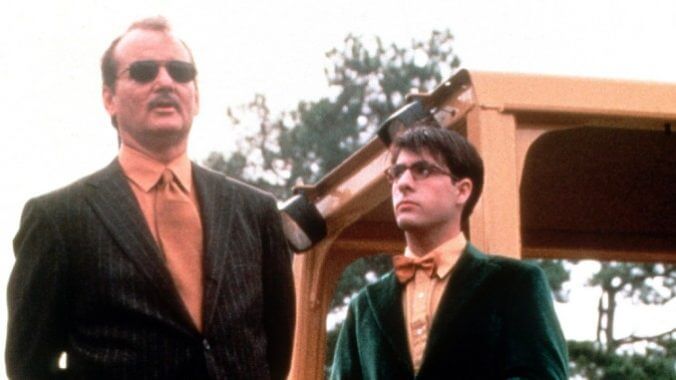Rushmore Introduced the World to Wes Anderson (and Reintroduced Bill Murray)

Wes Anderson has certainly had a productive year. He released his Asteroid City earlier this year and, just a few months ago, he dropped a quartet of short films on Netflix, based on short stories by Roald Dahl. Personally, I prefer the short films to Asteroid City, a film that even had an Anderson fan like myself wondering, “What the hell was that all about?” In Asteroid City, Anderson had longtime collaborator Jason Schwartzman play a recently widowed dad (and the ambitious actor who plays him). It’s kind of wild watching Schwartzman as a bearded, graying adult in an Anderson film, especially when he made his big-screen debut as a teenage overachiever in Anderson’s breakout movie Rushmore, which came out 25 years ago this month.
Schwartzman, the 17-year-old then-drummer for Phantom Planet (AKA the band behind “California,” the theme from The O.C.) and offspring of Hollywood royalty (his mom is Talia Shire, which means Francis Ford Coppola is his uncle and Nicolas Cage and Sofia Coppola are his cousins), was just the right person to play private-school kid Max Fischer, whom Anderson once described as “a fifteen-year-old Mick Jagger.”
Despite having lousy grades at Rushmore Academy (“He’s one of the worst students we’ve got,” the headmaster—a pre-Succession Brian Cox—says), he’s practically the resident BMOC, strolling through the school halls rocking braces, Buddy Holly specs and his trademark prep-school jacket. He’s a beast when it comes to extracurricular activities (which are all listed in this hard-rocking montage), either serving as a member or president of the myriad school groups. His prized baby is the Max Fischer Players, a repertory theater company that puts on elaborate productions like a stage version of Serpico.
Fischer is all pasty-faced swagger, having such magnetic rizz (I believe that’s Gen-Z slang for “charisma”) that even classmates’ parents find him charming. He gains a mentor/buddy in Herman Blume (Bill Murray), a rich industrialist with a cheating wife and twin sons he can’t stand. Their friendship turns to animosity when both gents have eyes for Miss Cross (Olivia Williams), a fetching English teacher at Rushmore. The two men engage in a rowdy battle of revenge that predictably becomes them just ruining the lives of each other and themselves.
Anderson obviously modeled Fischer on several young, male, lovelorn movie protagonists who are too ambitious and naïve for their own good: Dustin Hoffman’s Benjamin Braddock in The Graduate, Bud Cort’s Harold Chasen in Harold and Maude, Noah Taylor’s Danny Embling in Flirting. You even get a whiff of the cocky guys Tom Cruise played in the ‘80s. But Fischer is also a stand-in for Anderson and co-writer Owen Wilson, two Texas pals who’ve done time at prep schools. Anderson also shot the film at his ol’ alma mater, the St. John’s School, in his hometown of Houston. (The Houston Cinema Arts Festival recently held a 25th anniversary screening at the school.)
-

-

-

-

-

-

-

-

-

-

-

-

-

-

-

-

-

-

-

-

-

-

-

-

-

-

-

-

-

-

-

-

-

-

-

-

-

-

-

-








































